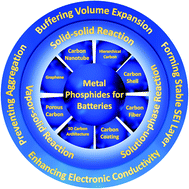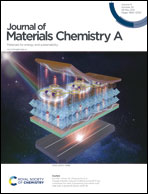Progress and perspective of metal phosphide/carbon heterostructure anodes for rechargeable ion batteries
Abstract
Advanced electrode materials embrace the key to the fundamental progress in rechargeable ion battery systems, which are essential to meet the finite nature of fossil fuels and the growing energy demands for clean and renewable energy. Metal phosphides in particular offer opportunities in rechargeable ion batteries owing to the extraordinarily high theoretical capacity and suitable redox potential. Notwithstanding these advantages, metal phosphides suffer from drastic volume variation during the electrochemical cycling process, resulting in relatively low capacity retention. Constructing metal phosphide–carbon heterostructures is an engrossing approach, which is because nanocarbon possesses bifunctional features that afford an electronic pathway and alleviate large volume expansion. Thus, the hybridization strategies of metal phosphides with different carbonaceous species are specifically highlighted in this review, followed by the illustration of how a robust understanding of these carbon matrixes within composites provides fundamental insights into the electronic conductivity, cycling durability, and rate capacity in metal phosphide electrodes. Meanwhile, the systematic discussion of the Li+/Na+/K+ ion storage mechanism in metal phosphides has also been expressly represented. Based on the insights, we outline the critical issues and challenges of metal phosphide/carbon heterostructures that need to be addressed to broaden their contribution in rechargeable ion batteries.



 Please wait while we load your content...
Please wait while we load your content...